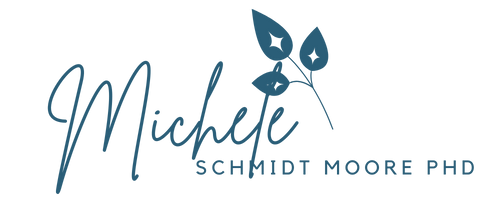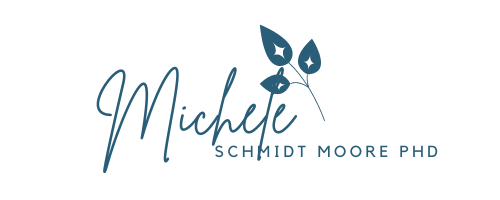45. Project You: Extrinsic Motivation Gives a Boost
Subscribe to the Podcast:
Apple, Spotify, Google Podcasts
Welcome to season 3 of Design Lessons!
Season 3 is special because it is focused on you. It will give you the opportunity to focus on one specific area of your life that you would like to make just a little bit better.
Hey Designers,
Congratulations! You’ve just completed your first week of experimentation in Project You. If you are just getting started with Project You, go to episode 41. That’s the perfect place to start.
To recap we are using the LEADER framework which I adapted from the design thinking process. It helps us to adopt a reflective mindset about our lives. As we move through the process together over the next few weeks we will work on a mini life design that is going to make one aspect of our lives a little better.
So LEADER stands for Listen, have Empathy, Access your ideas, Design a solution, Experiment and Reflect. It allows you to become a leader in your life.
We have entered the experiment phase. In this phase we are putting our design into action. When we were last together, you created your design, and you have spent the last week or so living with it. It could be that you designed a new schedule, a checklist, an inviting environment. There were so many possibilities for your design.
In this episode, we are going to add two more strategies to our toolbox that are going to help us get the most out of our design.
The first is to keep a scorecard.
-
The design challenge that I am finishing right now is one that I designed to help me to exercise consistently. I have struggled with depression my entire life. One day I wrote a letter to myself when I was depressed describing how I was feeling to my depressed self and then later wrote a letter to myself when I was feeling better detailing all of the things that I did that led me to feeling better. You can listen to the letter in Episode 10: One Strategy to Change Your Mood. This idea comes from Glennon Doyle’s book Untamed.
So movement or specifically exercise is one of the elements that helps me to feel like I’m living and enjoying my life.
So I set up a design to help me to move consistently every day. I either had to move at least 10k steps or exercise. So the intrinsic motivation for me is that I want to feel well and live a long healthy life well into my 90s. That WHY is very important. Finding out what is important to you, and discovering how your life experience has shaped what you hold dear is important. We dive deeper into that a course on macro life design that is in development right now.
But what is also important, and this is an unpopular opinion so listen up. What is also important is extrinsic motivation. We live in a world of gray. Nothing's all bad or all good.
What will help you to stick with your life design, whether it’s this micro design that we are experimenting with right now, or whether it is the macro design that we will work on within the upcoming course is your intrinsic motivation. No matter how off track I may become with my exercise. I will always get back on track because I am intrinsically motivated to do so. But –and here comes the unpopular part. Extrinsic motivation is important too. Extrinsic motivation plays a role in jumpstarting a new routine or habit.
To recap, intrinsic motivation will help you maintain a habit for the long haul. Extrinsic motivation will give you a jumpstart.
Intrinsically I am motivated to exercise because I want to feel mentally and physically healthy. I want to live a long life and be able to be active and healthy until the end.
Externally I am motivated by streaks and prizes.
So for my exercise design, at the end of each week, I count up all of the days that exercised, if I reach my goal then I get a prize. The prizes are nothing big, they complement my exercise goal, for instance, I might get a new running hat, or a new cookbook. I look at them as a way of celebrating the wins of my design.
The combination of streaks and weekly celebrations is my scorecard.
What kind of scorecard are you keeping?
There are weekly and monthly layouts in the Project You Action Planner to help you keep track of and celebrate your progress.
The second strategy is to revise early.
You are going to make adjustments to your design based on what you are observing each week. Quitting is not an option, but revising your design to enhance your progress is. Architects use a protocol called charette to make early revisions on a design before a design is too dear to see what could be changed.
Reflecting on your goal and your design this week will let you see patterns and you then can tweak your design accordingly.
One tweak that I made to my exercise design was that I moved the time that I exercised on Thursdays. I had one hour of dead time between when school ended and when I started tutoring. If I exercised after tutoring, it would be too late in the day. I would have to bust through the friction of walking the dogs, eating dinner, and changing into my workout clothes before I would get to exercise.
By putting my exercise time in the dead space between school and tutoring, when there was nothing productive that I would be doing, allowed me to add a run to my schedule. There was almost no friction. I changed into my running clothes, went running, and then started tutoring. It gave me the downtime I needed to relax and unwind from my day, and I could more easily continue my streak.
To recap keeping a scorecard and tweaking your design early on can help you see progress. Intrinsic and extrinsic motivation both have a role to play in your design.
What tweaks are you making to your design this week? How are you celebrating?
Share about your design at https://www.speakpipe.com/DesignLessonsPodcast Go do it now.
Until next designers,
If you love the show, you can help support this work by sharing it with others or buying a coffee.
Connect with the Host
Dr. Michele Schmidt Moore on Instagram
Dr. Michele Schmidt Moore on Twitter
Dr. Michele Schmidt Moore on Facebook
Subscribe to the Podcast:



